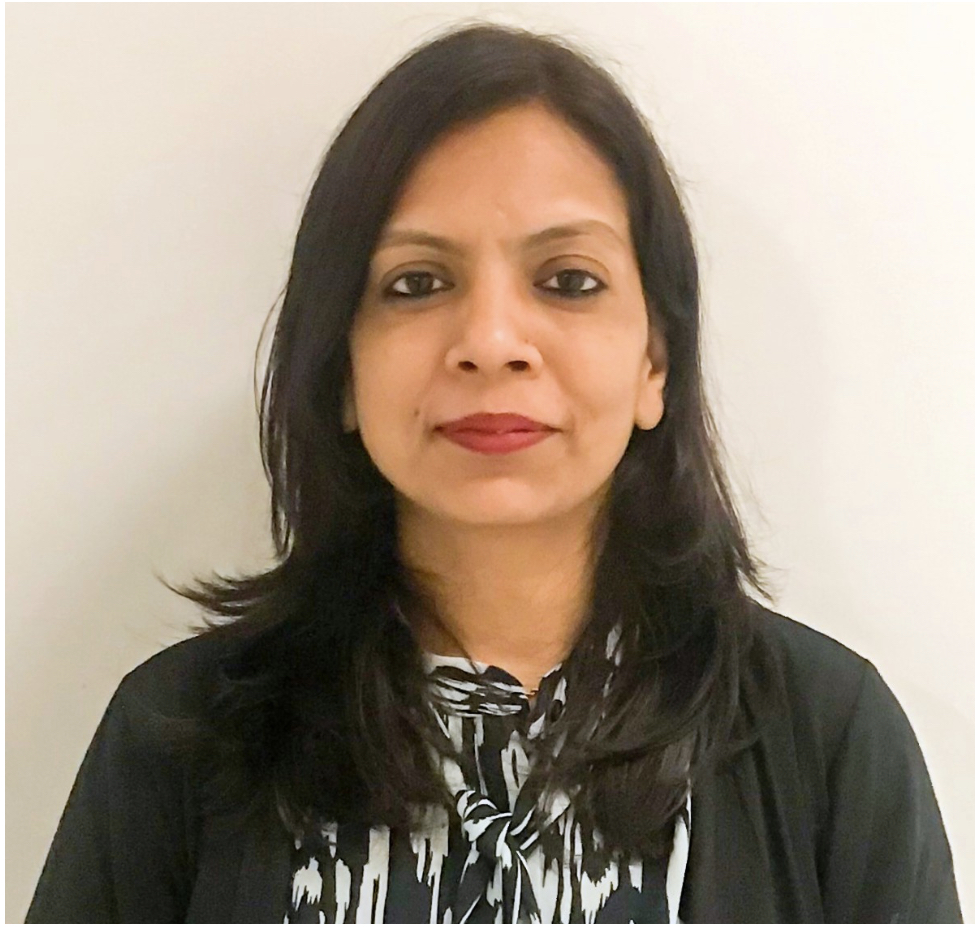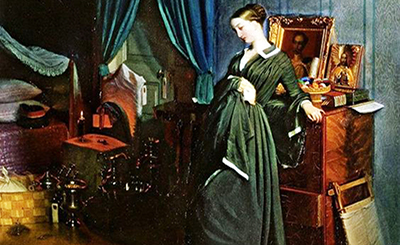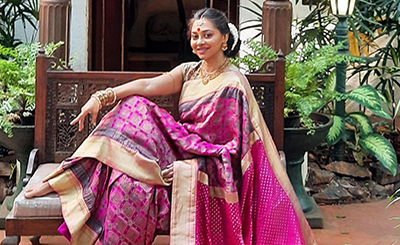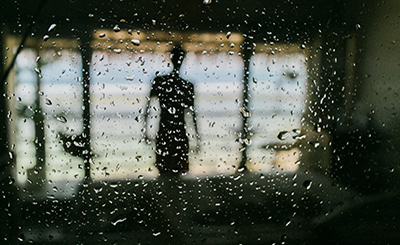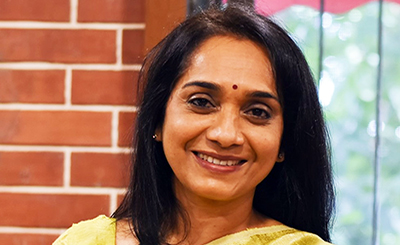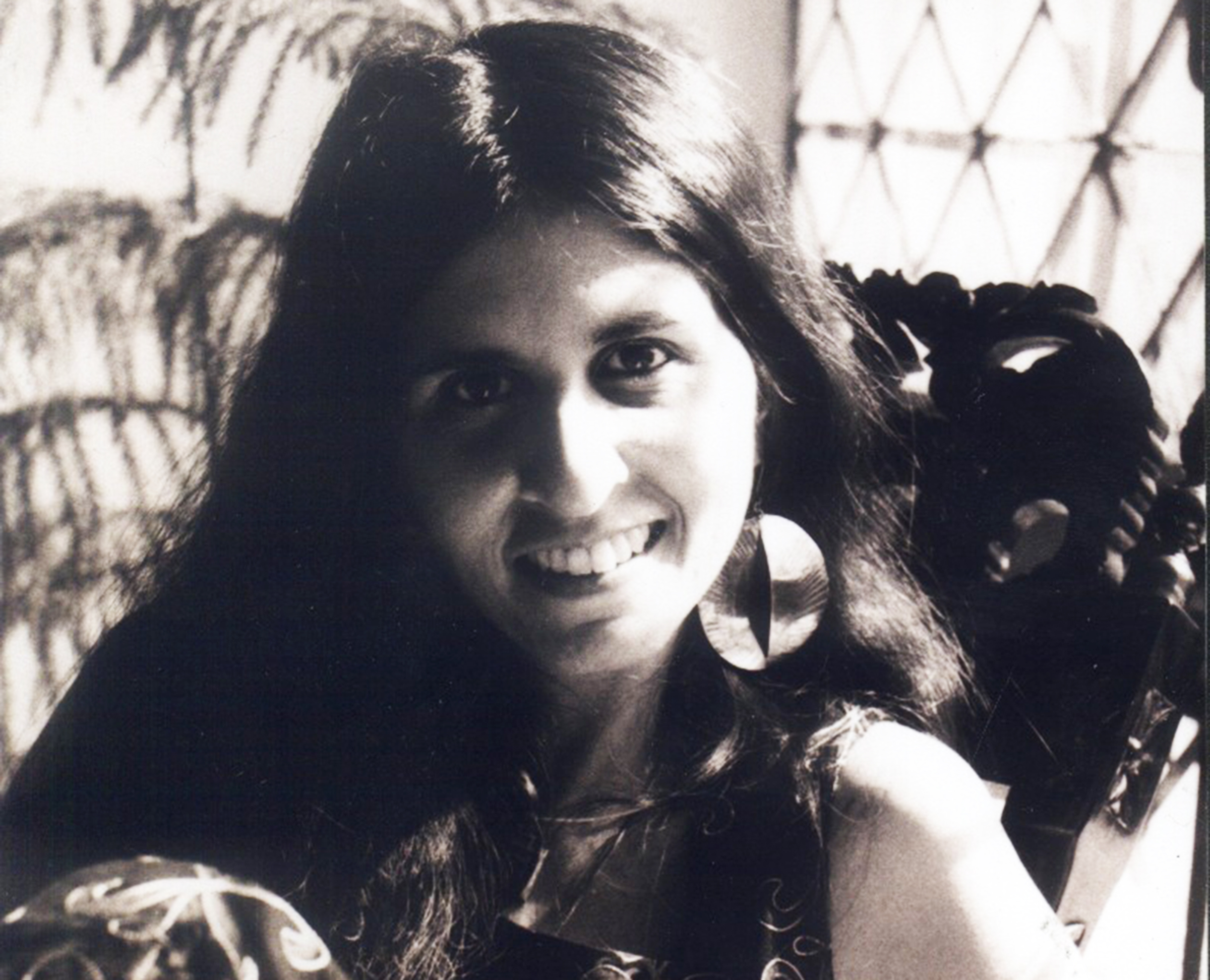
Uzma Aslam Khan. Photo: David Maine
Writing for Pakistani author Uzma Aslam Khan, 50, is a deeply immersive act — she says it demands of her, physically. “Since I never have an outline or any kind of plan, it’s as though the union between pen and page becomes the body,” she says, talking about her writing process and her treatment of the corporal in her novels. Khan is the author of five novels. Her latest, The Miraculous True History of Nomi Ali (Context), was released this year. Like all fiction, her latest was a “leap of faith.”
Khan says we tend to overlook the catastrophic impact of trauma — local, including within the family, and global — on the body. “What happens when the body is written out of history and memory, generation after generation, can only be written, reclaimed, and healed by the body,” she says.
If, through writing, she succeeds in humanising people across boundaries, she says perhaps it has helped that she has had to live along and push against some of those borders, and cannot definitively say where she belongs. Excerpts from an interview:
Shireen Quadri: Your latest novel, The Miraculous True History of Nomi Ali, set on the Andaman Islands in the pre-independence days, is saturated with the suffering of the convicts during the occupation of the island at the hands of the British and Japanese forces. “True History” in the title of this novel lends an intriguing element. Tell us about its genesis and conception, as well as the research for the novel. What made up for the dearth of material on the subject?
Uzma Aslam Khan: It began with an accident, 26 years ago. I pulled the wrong book off a library shelf and found a quote about the Andaman “prisoner paradise.” I didn’t find the book I wanted, but found the one I had to write. I spent the next two decades looking for the true histories of the penal colony, but found hardly any. Like all fiction, writing The Miraculous True History of Nomi Ali was a leap of faith. Though I collected every book, article, and photograph I could find, ultimately, the history became secondary. It was my obsession with the imagined characters, and a stubborn belief that their omission from our collective remembrance was no longer acceptable that grew primary, helping me to build a language and make up for the dearth of material.
Shireen Quadri: The story of Nomi and Zee, the local borns, whose father Haider Ali is a settled convict, and whose mother Fehmida is in a way part of the system, is the central link of the novel around which the lives of others on the island — convicts, prisoners and aborigines — are interwoven. Did you want a family or families to be the microcosm/s of the larger story unfolding on the island?
Uzma Aslam Khan: Not particularly. I didn’t know what would happen to any of the characters till it happened. I had no outline. I could only feel my way to the end.
Shireen Quadri: The novel is populated by fascinating characters, like Aye, the friend of Nomi and Zee and Loka, an aborigine, Shakuntala and her daughter White Paula, Susumu San, the Japanese doctor, whose lives get inextricably interlinked during the war. They all have a past that have a bearing on their present. Tell us about the process of creating these incredibly interesting cast of characters.
Uzma Aslam Khan: Each character had its own genesis, and some changed greatly from how I first imagined them. For instance, Shakuntala. In earlier drafts, there was more of her past in Chittagong. When I grew to understand her better on the islands, I trimmed the earlier parts. Then, there are characters who seem to form each other. Nomi and the prisoner were a kind of dual compass. I will speak on the prisoner in Qs 5, but when I found Nomi, the story found its momentum. Others are based on actual figures. The first chapter, about the Japanese stealing chickens, is based on actual events. The first shot against Indians on the Andaman Islands was fired when a boy was trying to save a chicken. Zee’s character is based on that boy, but Nomi is made up.
Then there are characters that came later in the drafting process; for instance, Susumu San. I saw him in a flash, on his bicycle. I lived in Japan as a child, and though I haven’t been back since, Susumu San was strangely and immediately familiar. I think what helped me create this cast of characters, regardless of their backgrounds, or even their crimes, is that to me each one was always intimately human. Otherwise, I couldn’t have carried the book for 26 years. I was mesmerised by the many layers, the shadows and the light.
Shireen Quadri: The novel juxtaposes the brutality during the war with the enchanting beauty of the island. The island heaves with life in the novel. Did you consciously work on this? Did you have any island novel as a template?
Uzma Aslam Khan: One of the questions that haunted me from the start was that despite the coconut groves and crystal bays that the British found in this pocket of the Bay of Bengal, they turned it into a penal settlement. What is the mind that looks upon beauty and sees, instead, a means of torture? That wishes for whipping stands, gallows, and eventually a highly sophisticated panopticon prison? That when surrounded by flowers, aspires to be Head Constable of a solitary lock-up? I mean, think about it, even cold-bloodedly. Why destroy indigenous people and lands, and replace them with inmates that you must work extremely hard to crush?
I was fairly preoccupied with these questions. They are closer than we want to acknowledge. Many of us may not be that destructive, but we destroy each other and our environment every day. We have always been attracted to beauty, taken it for granted, and attached it to power, with devastating consequences. So I am still haunted by these questions. What do we do with what draws us — preserve or spoil it?
As to the last question, I didn’t have an island novel as a template, but at the British Library and Cambridge University, I read many accounts of British settlers on the islands.
Shireen Quadri: The story of the unnamed prisoner, Prisoner 218 D, who was in trial in Lahore and then brought to Andaman, is very skilfully crafted and is immensely poignant. She is someone who wages the empire against the two empires with her body and memory, and is at the receiving end of the monstrosity by the jailors. How did you work on her story which is deeply enmeshed in the history of the undivided subcontinent?
Uzma Aslam Khan: The unnamed woman prisoner was the very first character I wrote. Across personal tragedies and the places where I have lived — North America, North Africa, South Asia, Oceania — I carried her. I’ve never carried any other character for so long. She does wage against both empires with her body and memory. For her to be able to do this, she had to be a long, long time in the making. We had to age together. I mentioned earlier that Nomi and the prisoner were a kind of dual compass. The prisoner started the journey to this book. Nomi completed it. Their meeting in the book has special resonance for me. I hope it will for the reader too.
Shireen Quadri: The evocative passages describing the suffering of Prisoner 218 D also bring to mind your treatment of the corporal which has been evident in your earlier novels. When you start working on a novel, do you have to work on this element?
Uzma Aslam Khan: Writing for me is a deeply immersive act — it demands of me, physically. Since I never have an outline or any kind of plan, it’s as though the union between pen and page becomes the body.
Interestingly, my novels have also cost me physically. My third, The Geometry of God, was written with an injured ankle that I was too lost in the book to care about treating. After the next, Thinner Than Skin, I suffered a knee injury that, like the ankle, has never healed. Other health issues lowed the writing of The Miraculous True History of Nomi Ali, and it’s often hard for me to sit at my desk for long stretches of time, but I ignore the pain, as I need those stretches of time to sink into the writing.
Recently, I read an article about Frida Kahlo’s illnesses, and how her work reflected this. I realised that mine did, too. I’m not comparing my work to hers, but I also had a difficult childhood, health-wise, which has carried into adulthood, and I do find it interesting that disability becomes a site of exploration. My characters are dealing with trauma that is held in the body. A reader recently pointed out that they also heal each other physically, often with water and earth. Haider Ali’s mother feeds him Multani mitti. Aye holds Zee when they swim. The aborigine women paint men with clay. And other examples.
I’d emphasise that we are still overlooking the catastrophic impact of trauma — local, including within the family, and global — on the body. What happens when the body is written out of history and memory, generation after generation, can only be written, reclaimed, and healed by the body.
Shireen Quadri: Do you see nature as one of the novel’s characters since it is steeped in the colour, and silences, of the place, the expanse of the sky, the land and the sea, and lends the novel breath and breadth?
Uzma Aslam Khan: Absolutely. Nature is a primary character — Nomi, the prisoner, and the other characters are part of it. They can’t be separated. This isn’t something I was striving for; it’s just how I work. As noted in the previous question, I don’t work well with abstractions. The physical world tells the emotional truth. For instance, it’s one thing to say that the Second World War caused indigenous fishermen in the Andaman Islands to lose a primary source of food. It’s quite another to show the fear caused by underwater mines, and the totality with which the mines displaced fishermen from their oldest cultural ally, the sea. A fiction writer needs to capture that relationship from within, its beauty and its loss, physically and emotionally.
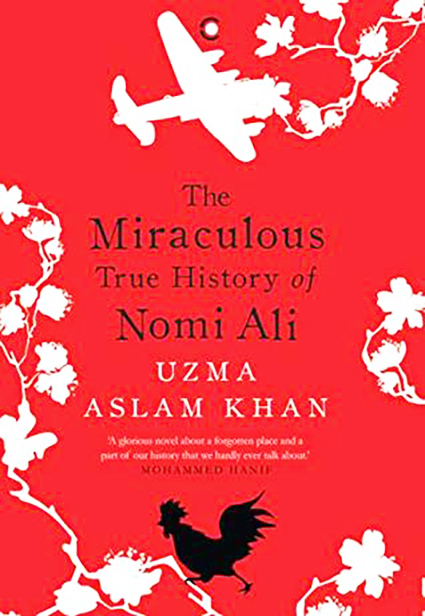
Shireen Quadri: The novel has a certain musicality. Do you worry about the sounds and shapes of the words, the texture and structure in your novels?
Uzma Aslam Khan: Very much. Like characters, there are some sentences that appear in a flash, without needing much work. Others require time, sometimes exhaustive time.
I’m glad you mentioned the structure. After my second novel, Trespassing, I longed to write a story in a single point of view, in linear time. But I had to accept that I don’t get to decide. The book decides. If it wants to bend, it will bend. Turns out, all five novels have wanted to crisscross and curve, in multiple points of view. Since for Miraculous True History of Nomi Ali I was working with a wide cast of characters, the structure took a long time to reveal itself. It wasn’t till my final revision that it occurred to me I could draw the structure. And I drew a flower. It came to play a shy, cameo role at the end of the book. Only Aye sees it. I’m so pleased with my drawing that I’ll describe it to you, as I did to my publisher. The book’s first three parts are the shape of a petal, always beginning in 1942 and looping back around. The centre of this flower is what happens to Zee. The fourth, final part is the pistil: it shoots forward, without looping back. I didn’t know it while writing the book, but now I always carry a visual of the flower with me.
Shireen Quadri: Is there anything about this novel that nobody asked you about and you’d like to share?
Uzma Aslam Khan: Thank you for this question. I wonder if I can ask, simply: why does this story matter today?
My answer: It is dangerous to think of 1930s and 40s Andaman Islands as merely a “remote” history, or as a past that is “over.” There is still today a terrible battle underway worldwide between right-wing ideologies. Each time, we label a land and people “remote,” we are complicit in their marginalisation, which in turn is a kind of violence. Children like Nomi are still caught in the crossfires. They are still losing families to death, detention, and irreversible emotional damage. Women like the unnamed prisoner are still unnamed, still forgotten. We — the global we — never freed ourselves of fascism. For all our present-day talk of diversity, the lives of people from outside the “known” Euro-American universe are still being erased, and those who survive are expected to exist gratefully on the margins, still silenced, still unequal. This history is chillingly cyclical, and this fiction, to me at least, is very much of the moment.
Shireen Quadri: How do you see the intersections between faith and longing, and identity and belonging play out in your novel. What shapes your own ideas about each of them?
Uzma Aslam Khan: As someone who has lived in places where I am frequently “othered” — for being brown, female, and Muslim — and as someone from a country where women are primarily identified as “daughter of” or “wife of,” I am used to noting what isn’t said, who isn’t seen. Much of what I know is through sources that criminalise a “wrong” identity, especially when it steps out of a fixed, assigned place. So identity is a tricky question.
Sometimes, I can derive power from this. If, through writing, I succeed in humanising people across boundaries, perhaps it has helped that I have had to live along and push against some of those borders, and cannot definitively say where I belong. Perhaps this novel had to be written by someone without the privilege to suppose much, yet with the understanding that everything had to be learned and imagined from scratch.
Shireen Quadri: Could you share some writers whose works you keep revisiting, and why?
Uzma Aslam Khan: Virginia Woolf’s A Room of One’s Own. A woman is entitled to her own uninterrupted space, protected and nourished by her own money? I read these words when I was fifteen and they still have a secret, forbidden ring to them. Colum McCann’s Everything in this Country Must has a special resonance, for the music of its prose, and for how children are implicated in larger events. The trauma that children inherit and sometimes perpetuate is also captured heartbreakingly by Nam Le in The Boat and Arundhati Roy in The God of Small Things. I am in awe of Edward P. Jones, Edwidge Danticat, and Patrick Chamoiseau, who write about systemic racism in ways that reclaim humanity with majesty, dignity and sensuality. Finally, the words of Eqbal Ahmad (Pakistani political scientist, 1933-99) are never far from my desk. I turn to them for many reasons — Ahmad’s insights into the cyclical nature of violence, as much as his ability to sustain intellectual luminosity with a poetic heart.
Shireen Quadri: What are you working on next?
Uzma Aslam Khan: Having recently completed a book that took more than 26 years, I’m catching my breath. However, “breath” means scribbling and doodling tiny, timid seeds in my journal. To what purpose, time will (hopefully) tell.
Comments
*Comments will be moderated



